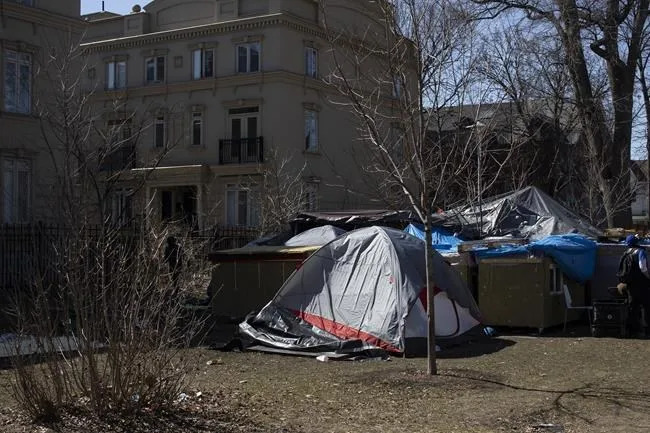Pension funds post the largest investment losses since the financial crisis in 2008
Naomi Oliver
January 31, 2023
/cloudfront-us-east-1.images.arcpublishing.com/tgam/IW5WLMHTDBKA7GA2UJUR24U4IQ.jpg?resize=780,470)
In 2022, Canadian defined benefit pension plans collectively suffered their biggest losses since the 2008 financial crisis, and despite a partial recovery, saw an average 10.3 percent RY-T decline in assets in the final months of the year, according to a Royal Bank of Canada survey.
Pension assets suffered sharp losses in the first two quarters of 2022 before starting to recover in the second half of the year. In the most recent quarter, pension assets returned 3.8 percent, as measured by the RBC Investor and Treasury Services All Plan Universe, which serves as the benchmark for performance.
Pension plan investors have been hit by unusually volatile markets, fueled by high inflation and soaring interest rates, as both stocks and bonds suffered losses rather than offsetting each other as has often been the case in previous market downturns. And while the plans delivered positive returns through the end of the year, they face many of the same burdens in 2023.
“Over the next few months, plan sponsors will need to be vigilant for risk factors such as the economic impact of central bank actions, ongoing geopolitical tensions and ongoing efforts to contain the outbreak of the COVID virus in certain emerging markets,” Niki Zaphiratos, managing director for asset owners at RBC I&TS, said in a press release.
Canada’s pension plan bond portfolios posted median losses of 16.8 percent in 2022 – the largest annual decline in more than 30 years – and also underperformed the benchmark FTSE Canada Bond Index. The losses were driven by central banks’ drastic moves to tame inflation by raising interest rates, with longer-duration bonds, which are most sensitive to inflation, accounting for some of the largest declines.
For pension plans, however, there was a silver lining from rapid rate hikes that led to a reduction in future liabilities. As a result, more pension plans ended 2022 in surplus, meaning their assets exceeded their liabilities. And higher fixed income yields could also give pension plan managers more opportunities to reduce risk appetite in their portfolios in the coming year.
Stocks also suffered, rather than acting as a counterbalance to falling bond prices. According to RBC I&TS, foreign stocks returned 9.7 percent in the fourth quarter but ended the year down 11.3 percent. And Canadian stocks returned 6.3 percent in the final quarter of the year, bringing their annual loss to a comparatively modest 3.6 percent. In general, value stocks outperformed riskier growth stocks during the quarter.
The last time pension wealth fell this sharply was in 2008, when Canada’s defined benefit pension wealth posted a median loss of 15.9 percent.
Defined benefit plans pay fixed benefits for as long as a beneficiary lives, based on their contributions and years of service.
Source: www.theglobeandmail.com
Naomi Oliver
January 31, 2023
/cloudfront-us-east-1.images.arcpublishing.com/tgam/IW5WLMHTDBKA7GA2UJUR24U4IQ.jpg?resize=780,470)
In 2022, Canadian defined benefit pension plans collectively suffered their biggest losses since the 2008 financial crisis, and despite a partial recovery, saw an average 10.3 percent RY-T decline in assets in the final months of the year, according to a Royal Bank of Canada survey.
Pension assets suffered sharp losses in the first two quarters of 2022 before starting to recover in the second half of the year. In the most recent quarter, pension assets returned 3.8 percent, as measured by the RBC Investor and Treasury Services All Plan Universe, which serves as the benchmark for performance.
Pension plan investors have been hit by unusually volatile markets, fueled by high inflation and soaring interest rates, as both stocks and bonds suffered losses rather than offsetting each other as has often been the case in previous market downturns. And while the plans delivered positive returns through the end of the year, they face many of the same burdens in 2023.
“Over the next few months, plan sponsors will need to be vigilant for risk factors such as the economic impact of central bank actions, ongoing geopolitical tensions and ongoing efforts to contain the outbreak of the COVID virus in certain emerging markets,” Niki Zaphiratos, managing director for asset owners at RBC I&TS, said in a press release.
Canada’s pension plan bond portfolios posted median losses of 16.8 percent in 2022 – the largest annual decline in more than 30 years – and also underperformed the benchmark FTSE Canada Bond Index. The losses were driven by central banks’ drastic moves to tame inflation by raising interest rates, with longer-duration bonds, which are most sensitive to inflation, accounting for some of the largest declines.
For pension plans, however, there was a silver lining from rapid rate hikes that led to a reduction in future liabilities. As a result, more pension plans ended 2022 in surplus, meaning their assets exceeded their liabilities. And higher fixed income yields could also give pension plan managers more opportunities to reduce risk appetite in their portfolios in the coming year.
Stocks also suffered, rather than acting as a counterbalance to falling bond prices. According to RBC I&TS, foreign stocks returned 9.7 percent in the fourth quarter but ended the year down 11.3 percent. And Canadian stocks returned 6.3 percent in the final quarter of the year, bringing their annual loss to a comparatively modest 3.6 percent. In general, value stocks outperformed riskier growth stocks during the quarter.
The last time pension wealth fell this sharply was in 2008, when Canada’s defined benefit pension wealth posted a median loss of 15.9 percent.
Defined benefit plans pay fixed benefits for as long as a beneficiary lives, based on their contributions and years of service.
Source: www.theglobeandmail.com
:format(jpeg)/cloudfront-us-east-1.images.arcpublishing.com/tgam/XHXU4EPDRJDHLJVFOEXYOZIVEA.JPG)






